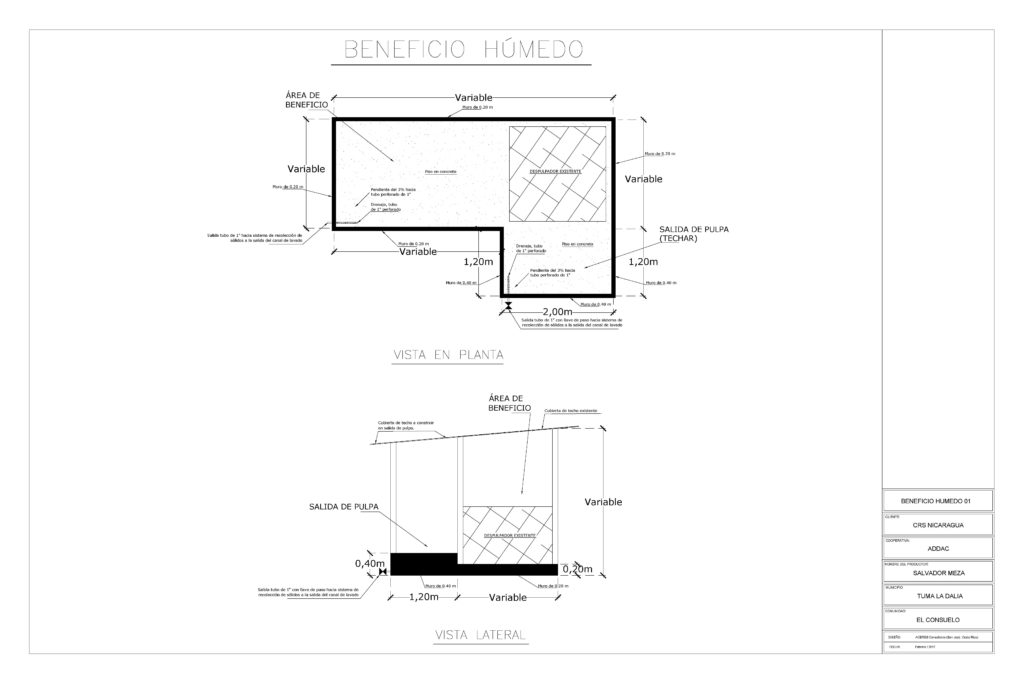Back in January, we presented some models of small wet mills that were designed to maximize water use efficiency and to treat waste water that generated by coffee processing. CRS build these seven model wet mills as part of the Blue Harvest project, funded by Keurig Green Mountain and the Interamerican Development Bank. The original concept for this work emerged through a partnership with Leonardo Sanchez, a regional expert on wet mill waste water treatment and on wet mill design. Leonardo and the Blue Harvest team in Nicaraguan designed a standard waste water treatment system for small wet mills (processing a maximum of 560 quintales [100 lb. bags] of green coffee per harvest, which was then adapted to each farmers’ unique context.
Let’s quickly review how these improvements in the wet mill actually save water: The new system changes how cherries move through the mill to the depulper. The innovation here is that instead of using water, the improved mills use gravity to convey the cherries. The depulping process itself then only uses a minimal amount of water, and after that a screw drive transports the pulp and the coffee directly into fermentation areas (for coffee) and compost areas (for pulp). Washing and sorting then takes place in a canal using just enough water for the washing and the quality sorting/selection.
In order to quantify the impact of the new system on water efficiency, we worked with each of them farmers to measure, or to estimate as best as possible, the amount of water they normally used for processing one kilo of coffee cherries. On average, the farmers used nearly 4 liters of water to process one kilo of coffee cherries.
After the installation and calibration of the systems, we re-measured the water use and saw dramatic improvements in the water used efficiency. The average water use in the wet mills was 0.67 liters of water per kilo of coffee cherry. This means that the new system reduced water use by 70% from the baseline numbers mentioned above.
During this last harvest, participating farmers processed 1,760 quintales of green coffee in these six improved wet mills. The improvements in these wet mills resulted in a savings of over 1.1 million liters of water. For reference, this would be enough water for 2,900 days of consumption of an average American household. And that is taking into account the fact that the United States has the highest water use per capita in the world at 100 gallons a day! In this current 2017-2018 harvest, we expect to see Nicaragua export over 3 million quintales. We improved the processing for 1,760 QQ of these. There are potentially billions of liters that we could save in Nicaragua alone and use for drinking water or other productive purposes such as irrigating crops. In the next post, we will look at the impact of these systems on reducing the pollution generated from the processing.




